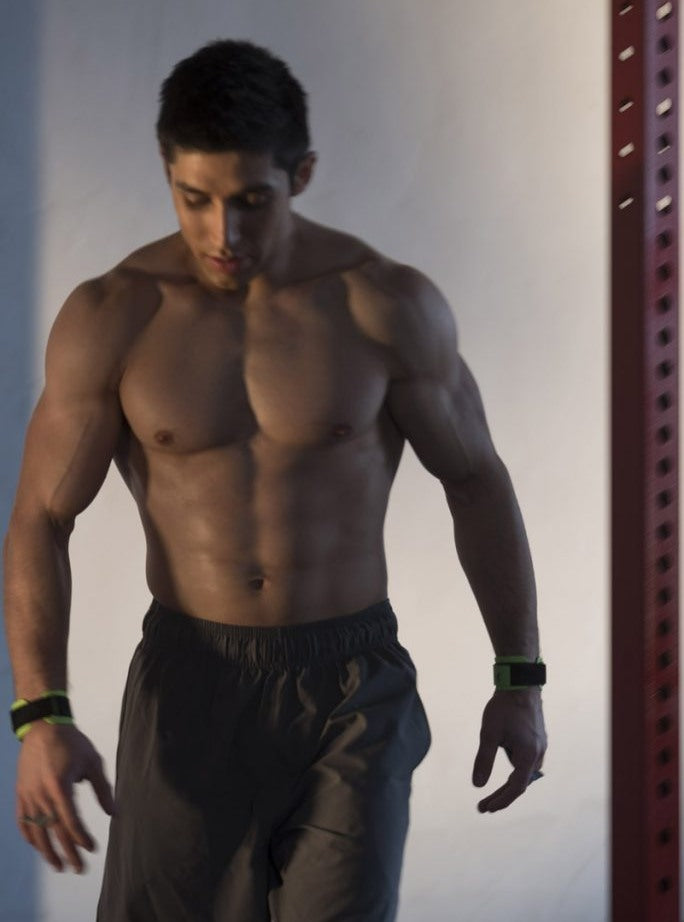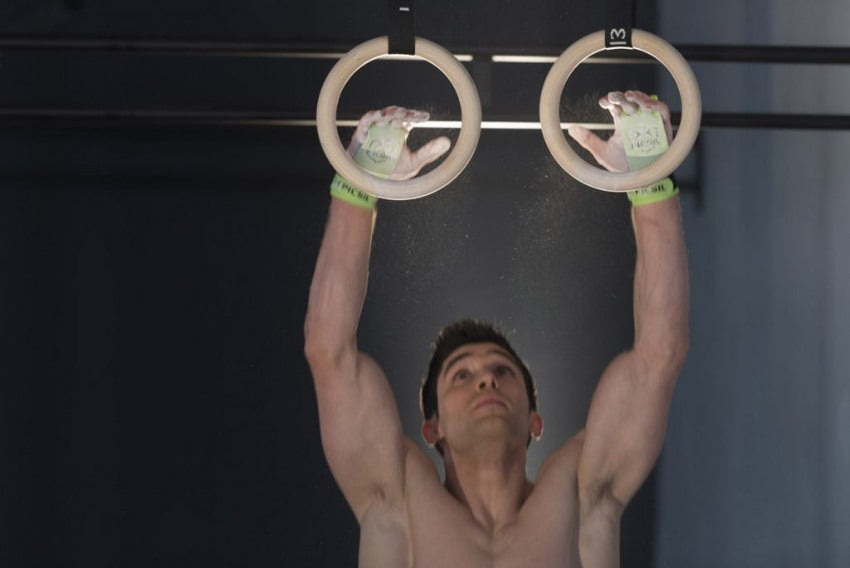Pull-ups , muscle-ups , chest-to-bar , toes-to-bar , strict , kipping , butterfly ... Gymnastics exercises in CrossFit are a headache when you start (and not just for learning the names) .
That's why we've turned to an expert, Olympic gymnast and crossfitter Javi Gómez, to give us his advice on how to handle pull-ups, whether strict or with kipping .
Overpowered? Strict? Kipping?
Many rookies make strange faces when they see the word pull-up and even chin-ups on the boxing board.
For this reason, this is the first question we ask Javi Gómez
"A pull-up is a movement that starts from hanging until you do a pull with your arms and bring your chin over the bar. It is the minimum. We can also do a chest-to-bar , which is bringing your chest to the bar" .
We continue solving gymnastic mysteries by asking our expert the difference between a strict pull-up and a kipping pull-up.
"Strict pull-ups are done by pure force ; that is, from standing. We have to do the pull and reach the top without making any type of movement with the body, using any help with the body. It is only with the strength of the arms It can be with a classic grip or with your hands inside out gripping the bar.
"With kipping it would be a pull-up using the rocking of the body, pulling the chest back and forth , from the hollow position and the arching position, so that the rise is easier."
In addition to technique, Gómez emphasizes that the strict movement requires much more strength than kipping , which works on resistance and repetition.
Pull-ups for beginners
Mastering strict pull-ups (pun intended), with kipping , on a bar or in rings requires, above all... Patience.
"You have to be aware that you have to go step by step. Look for the technique : do not use your body when doing strict exercises, maintain the kipping position. The important thing is to add repetitions while working on the correct technique," explains Gómez. .
Each exercise requires its own skills that you have to work in parallel to, on the one hand, gain strength in your arms and shoulders for the strict ones ; and, on the other, assimilate the body movement of kipping and butterfly .
"The important thing to do a pull-up is to have strength and perform exercises to gain pull-up strength. This is the good thing about CrossFit because, with weightlifting, we gain strength in our arms to then do pull-ups and so on," says our expert.
And he adds: "Many times, people stop doing strict pull-ups because it doesn't work for them. What I recommend to my students is that they work on them by going up less to gain strength, above all."
Rubber bands are a good ally for performing pull-ups and muscle-ups progressions, but to avoid picking up vices, Javi Gómez recommends alternating practice with and without rubber bands.
"It's fine to do kipping or butterfly without a rubber band to gain strength and feel how it's really done without any help. But the rubber bands serve above all to feel like you're going up and understand the complete movement ."
In short: "The important thing is to gain strength, understand the position of the body and not get frustrated."
Bar and rings: what's the difference?
If we talk about rings, we have to talk about muscle-ups , which are the advanced version of pull-ups, in which you have to bring your body over the bar.
"It is a very technical element. You have to catch the pull based on arm strength and body blocking strength. Then there is the range of motion of the shoulder and the positioning of the body."
According to Gómez, the most important thing is to go through the hollow phase with the shoulders behind and the arching phase in front and, very importantly, bring the body close to the bar . The quadriceps have to reach it.
"Patience, gain strength, mobility and do the muscle-up technique always close to the bar. And listen to the coach ," he emphasizes, smiling.
Returning to the rings and the bar.
The main difference between both tools is that the rings move and the bar remains stationary.
Therefore, the movement and force used are very different.
"With the rings, compared to the bar, we can move them towards the body so that it is a little easier to climb up. What's wrong with that? Just that. If we don't carry the rings close to the body, they don't escape and we can't do the muscle-up ," he highlights.
And to the question of which is easier: on rings or on a bar, Javi answers that one has enough strength to carry the rings to the body, it is easier on a bar because it does not move.
"People with more strength usually find it less difficult to work on rings. When you have less strength, it is easier to assimilate the technique to work on the bar," he points out.
Tips for facing gymnastics in a WOD
Let's take the example of a WOD with pull-ups or bar muscle-ups , which is the most accessible exercise, be it climbing or RX.
As a crossfiter who has participated in different crossfit competitions in Spain, Javi Gómez recommends the following:
If it's a short WOD with few reps, you need to perform a short movement. It is better to do pull-ups with a kipping with less flight because we have to make the movements short and fast.
In the case of long WODs, with many repetitions, it is better to use kipping and look for a slower pace to link the reps without getting too tired.

When is it best to use grips?
"You have to alternate. I would work with and without calluses , because it is important that the hand is made, so that calluses appear and it is stronger," he recommends.
As a professional gymnast, Javi Gómez highlights that he uses the grips to help him grip more than as protection .
"I'm used to having my hands slip. And as I start to bleed, I slip. Therefore, I'm not as efficient in doing the movement. The grips prevent you from slipping and avoid working more with your forearm and causing it to become heavy." ".
In his CrossFit and gymnastics training, Javi Gómez tells us that he loves the PicSil Azor Grips because, in addition to protecting, he notices that he grips the bar and the rings better. "I hold on practically the same as when I have my hand free."
The Raven Grips , the new PicSil model, are also in your training bag. "The PicSil handles are the ones I like the most because they are the most functional," he confesses.

















